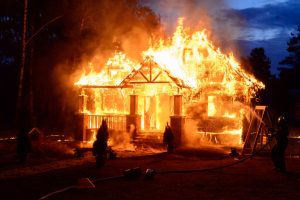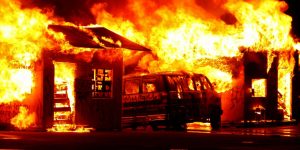Fire damage can be catastrophic for homeowners and business owners alike, financially. To safeguard yourself against fire damage, select the most suitable policy by assessing property value, comparing offers and understanding policy terms.
Preventative measures such as keeping flammable items away from buildings and regularly testing fire safety systems can significantly lower risks and demonstrate responsible action to insurers, possibly leading to reduced premiums.
Coverage for Damage to Your Property
Fire insurance provides the financial protection necessary to rebuild or replace your property after it has been damaged by fire, as well as additional living expenses if your home becomes uninhabitable due to a claim. Furthermore, it may cover costs of restoring or replacing personal belongings such as clothing, furniture and electronics – however some items like jewelry and artwork require specific coverage limits or scheduling arrangements for optimal coverage.
Standard homeowners policies usually offer sufficient protection, but you may also purchase stand-alone fire insurance coverage to add extra layers of defense for your older homes or those located in areas prone to wildfire. It may also help insuring vacation or investment properties which might otherwise be difficult to insure with traditional home policies.
Fire insurance typically provides protection for accidental fires that break out in your fireplace or kitchen, such as those lit deliberately. There may also be exclusions such as intentional lit fires. Other risks to be aware of could be explosions, lightning strikes, leaks from sprinkler systems and burst water pipelines or tanks.
Prevent any unnecessary delays by thoroughly documenting your property (including video footage) prior to filing a fire insurance claim. Make sure that receipts and important documents are stored safely, with digital copies saved safely online for easy access. Furthermore, don’t procrastinate getting repair estimates or filing your claims documents as some companies have strict time frames in which claims must be filed and don’t want you missing your chance!
Coverage for Damage to Your Personal Property
Homeowners insurance provides coverage for personal property like furniture, clothing and electronics should they be damaged in a fire. Some policies even include “loss of use” provisions which cover expenses like temporary accommodation and meals should your home become inhabitable after being hit by fire. As part of an inventory review of all your possessions it may be prudent to consider adding extra coverage for more valuable items like jewelry, art or wine that require extra consideration when insuring them.
Fire damage claims can be costly, and lenders typically require homeowners to have an adequate home insurance policy that includes fire coverage.
Fire damage coverage options depend on the type of policy purchased; actual cash value provides for repairs at current prices minus depreciation and deductions while replacement cost coverage provides for more costly reconstruction using standard materials and labor. The former option would cover repairs at current prices while replacement cost coverage works better for older homes or those featuring significant customized features that could make replacing them more costly than anticipated.
Keep in mind that many insurers won’t provide or renew home insurance policies for houses located in high-risk areas, such as those near canyons that funnel winds and contribute to wildfires or those located far from fire departments. If this describes your house and you require fire protection, state-run programs known as Fair Access to Insurance Requirements (FAIR) Plans could offer assistance; these plans offer coverage options specifically tailored for individuals denied coverage on the private market due to its location or risk profile.
Coverage for Damage to Your Building
Many fire insurance policies include coverage for rebuilding or repairing structures on your property such as sheds, barns and fences in case of fires. This coverage can help mitigate losses caused by major events like this without forcing you to replace all of your personal belongings at once.
Fire insurance policies often cover any items damaged during firefighting efforts by smoke or water, while special policies for artwork or collectibles that could be lost during an inferno may provide greater coverage.
Home or rental owners policies typically provide some form of fire coverage. Lenders generally require homeowners with mortgage loans to have valid home insurance before providing financing, since lenders hold an insurable interest in protecting it.
Home insurance typically offers two main forms of fire coverage – dwelling fire coverage and other structures coverage (detached garages, tool sheds and gazebos may also be covered), plus personal property replacement (up to your policy limits minus any applicable deductibles).
Coverage for Damage to Your Contents
Fire insurance protects both homeowners and landlords against costly out-of-pocket expenses after a loss, whether that be damage to the house itself or personal items lost due to fire. Homeowners need fire insurance in order to repair or rebuild a damaged house while replacing lost personal items; landlords can use fire insurance policies as protection to accommodate tenants in the aftermath of a fire and ensure rental income remains flowing freely.
Standard home owners policies often include some level of fire coverage; it’s essential that you review it periodically in order to verify whether wildfire damage is covered, and your coverage amount is adequate. A property insurance provider requires you to have an “insurable interest” in any property or contents being insured — meaning you’re willing to experience financial loss as the result of a fire.
Homeowners insurance typically covers personal belongings damaged or destroyed in a fire up to an amount known as the dwelling coverage amount (excluding any deductible). Other structures on your property like sheds, barns and detached garages may also be covered under other structures coverage – typically equaling 10% of dwelling coverage.
Some policies provide guaranteed replacement cost or building code coverage that covers any additional costs related to rebuilding to meet current safety standards, while loss-of-use coverage (also called additional living expense coverage) often covers expenses like temporary housing, meals and daily needs during an evacuation or reconstruction process.




